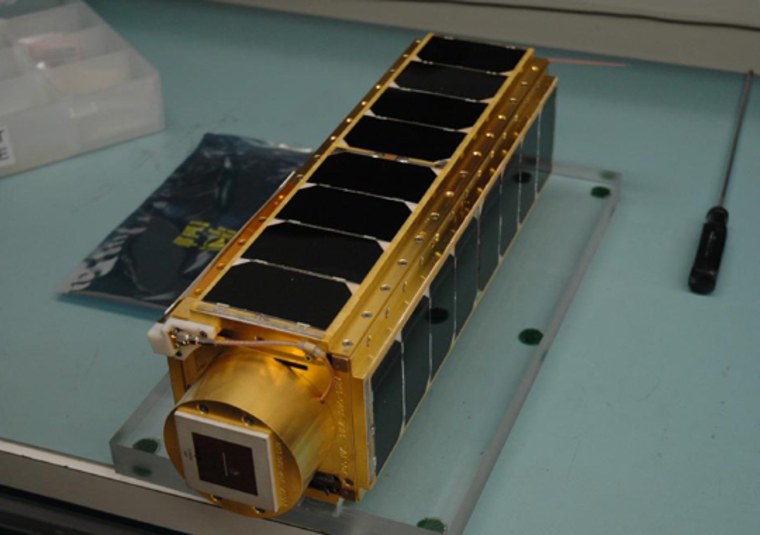Even worse then getting sick in space is discovering that a medicine, which worked fine on Earth, just doesn't do the job in zero gravity. That's why NASA is flying a tiny research satellite called PharmaSat, which is to take a piggyback ride into orbit on an Air Force rocket launching from Virginia's Wallops Island.
The spacecraft contains samples of brewer's yeast, a well-studied and commonly available fungus that is a pharmaceutical industry standard to test drug effectiveness. The yeast, known as Saccharomyces cervisiae, is harmless to humans, but the experiment should help researchers figure out how virulent similar microbes become in weightlessness.
During 96 hours of operation, the yeast will be fed nutrients to revive them from dormancy and then exposed to three different concentrations of antibiotic. The results of how many survive over time will be radioed back to researchers.
The experiment will be replicated on the ground during the mission for comparison.
"We suspect it will take more drug to cause the same amount of death to the yeast than what we'll see on the ground," said Bruce Yost, PharmaSat mission manager at NASA's Ames Research Center in Moffett Field, Calif., told Discovery News. "By using the three different concentrations, we're going to find out where that threshold is."
PharmaSat is part of a new NASA initiative to fly science experiments and technology demonstrations on inexpensive and generically manufactured miniature spacecraft called Cubesat, which are about size of a loaf of bread. For PharmaSat, three cubes were pieced together for a package that weighs about 10 pounds.
"The generally idea is to be able to launch one of these satellites about every year," Yost said. "Of course, we like to think that we could do it even more frequently. It brings out a lot of the value that these small spacecraft can provide. If you see something strange, you can re-fly (in a year) and not have to spend a whole bucket of money to do that."
"We're basically augmenting the space station," added Ellwood Agasid, a NASA project manager. "There's crew time that's involved (on the space station) and there's a backlog of missions."
"Space station also has a fixed orbit," he added. "We're able to go out to other orbits and provide a different environment than space station. We can go to an orbit that provides a lot more radiation, for example."
PharmaSat is to fly as a secondary payload on an Air Force Minotaur-1 rocket now due for launch on Thursday. Its primary payload is a technology demonstration spacecraft known as TacSat 3. Instruments include a high-resolution hyperspectral imager that can break light into its component wavelengths for chemical analysis.
NASA reimbursed the Air Force for costs associated with testing and preparing PharmaSat for launch, but the ride to orbit is essentially free. Overall mission costs for PharmaSat are about $3 million.
"Our dream is that almost any U.S. launcher going up will have the ability to carry one or two or more of these nanosatellites," Yost said.
This report was updated by msnbc.com.
